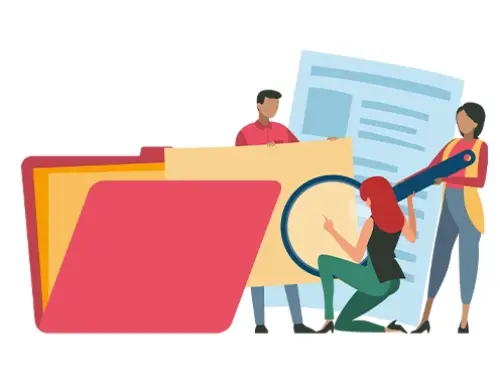Contents
Mastering Personal Injury Case Management: A Guide & Checklist for Legal Professionals
Personal injury attorneys and paralegals often juggle numerous cases, each at different stages of litigation. With so many moving parts, a systematic approach to case management is essential to stay organized and meet every obligation. Personal injury case management refers to the end-to-end handling and organization of a claim to ensure all aspects are efficiently managed, deadlines are met, and the client’s interests are protected. By using a structured checklist and best practices, legal professionals can streamline complex processes, avoid missing critical details, and focus more on client care rather than administrative chaos. This guide outlines key components of effective personal injury case management – from client intake and documentation to discovery, negotiation, and settlement – and provides the personal injury checklist and practical tips for each stage.
What Is Personal Injury Case Management?
Personal injury case management, a service that systematically organizes and handles a personal injury case from start to finish, is a testament to the expertise and competence of legal professionals. It ensures that every aspect of a claim is efficiently managed, all deadlines are met, and the client’s interests are advanced toward the best possible outcome. By streamlining and coordinating these tasks, legal professionals can focus more on strategy and client care, rather than on administrative headaches, demonstrating their commitment to their clients.

Who Is a Personal Injury Case Manager?
A personal injury case manager is a professional who plays a vital role in coordinating and overseeing all aspects of a personal injury case, from the moment a client is onboarded through the final resolution, whether that’s a settlement or a court judgment. Typically found in personal injury law firms, this position serves as the linchpin that keeps cases moving efficiently and ensures that attorneys, clients, and third parties are on the same page. Depending on the firm’s structure, the role may be separate from or overlap with that of a paralegal.
One of the core responsibilities of a personal injury case manager is client communication and support. They often serve as the primary point of contact for clients, keeping them informed about case progress and explaining the legal process in clear and understandable terms. Another major function is managing case files and documentation. Case managers are responsible for maintaining organized, up-to-date records in both physical and digital formats. This includes inputting and tracking case information, medical treatments, expenses, and other key data using case management software.
A significant part of the role involves coordinating medical records and bills. Case managers routinely request and track these records from providers, ensuring all necessary HIPAA authorizations are completed. Since personal injury claims rely heavily on medical evidence, this responsibility is central to building a strong case and accurately calculating damages.
Deadline and calendar management is another critical area. Case managers track essential deadlines, including the statute of limitations, court filings, discovery cutoffs, and other key dates that are crucial to the case. They ensure that attorneys are aware of and prepared for these deadlines, thereby reducing the risk of missed filings or procedural errors.
Plus, case managers often assist with insurance communications and the preparation of settlements. This may include contacting insurance adjusters, following up on pending claims, preparing documents for settlement negotiations, and assisting with lien resolution once a case is resolved.
While the case manager’s role may seem similar to that of a paralegal, there are important distinctions. Paralegals generally focus more on legal research, drafting pleadings, and preparing for litigation. Case managers, on the other hand, tend to concentrate on client-facing interactions, administrative tracking, and medical coordination. However, in smaller firms, one person may handle both responsibilities.
Key Components of a Personal Injury Checklist
When managing a personal injury case, attention to detail is everything. From the moment a client walks through the door to the final resolution of their claim, numerous moving parts must be carefully tracked and coordinated. That’s where a well-structured personal injury checklist comes in. Below, we break down the essential elements that every personal injury checklist should include.
I. Client Intake and Initial Assessment
Every case begins with a thorough client intake. This stage lays the foundation for the entire claim. Begin by gathering all essential information about the client and the incident, including personal details, accident details, witness contacts, and medical history. An initial interview allows you to assess case viability and identify any red flags or conflicts of interest early on. It’s also critical to have the client sign necessary documents at this stage – such as a retainer or contingency fee agreement and HIPAA authorization forms – so you can obtain records promptly. Take time to explain the legal process and set realistic expectations for timelines and outcomes. For example, discuss how fees work (especially if on contingency), potential challenges (like liability disputes or medical liens), and the client’s role in the process. This clarity at the outset helps build trust and ensures the client understands their responsibilities.
Intake checklist – ensure the following tasks are completed:
- Prepare the client for the first meeting: Before the initial consultation, instruct the client to bring all relevant case documents (police report, medical records and bills, insurance information, wage loss documentation, photos, etc.). Having these on hand saves time and prevents delays in gathering crucial evidence.
- Complete forms and agreements: Gather the client’s personal and incident details and have them sign a retainer/fee agreement and any necessary authorizations (e.g. medical record release, insurance communication authorization). Conduct a detailed interview to capture the facts, injuries, and damages in the client’s own words.
- Assess case viability and conflicts: Evaluate the information to confirm the case is viable and perform a conflict check. This check is a standard procedure to ensure that there are no conflicts of interest that could compromise the representation of the client. If the case has weaknesses, discuss them frankly with the client now.
- Establish rapport and expectations: Clearly explain the personal injury claims process and the likely timeline. Set expectations about potential challenges and the need for the client’s cooperation (for example, emphasizing that their prompt updates and honesty will help the case). Providing a written overview of the process and the client’s duties after the meeting is a good practice.
Consider using a standardized personal injury intake questionnaire to ensure no key detail is overlooked. This efficient tool can save time and improve consistency in the intake stage, making the process more effective for you and the client.
II. Documentation and Evidence Gathering
Once the case is underway, thorough documentation is paramount. This involves investigating the facts and collecting all relevant evidence that supports your client’s claim. Begin by reviewing the accident or incident reports and obtaining any available police or safety reports. Gather physical evidence, such as photographs of the scene, vehicle damage, or hazardous conditions, and secure any available video footage. Identify and interview witnesses promptly while their memories are still fresh and document their statements and contact information. In personal injury cases, medical documentation is central: obtain all medical records, bills, and treatment reports related to the injury as soon as possible. Don’t forget wage loss records or other proof of damages. Comprehensive evidence collection not only strengthens the case but is also necessary when drafting demand letters or preparing for trial.
Documentation checklist – make sure to:
- Collect key accident evidence: Secure the police/incident report and any 911 call logs or incident logs. Take or obtain photographs of the accident scene and injuries and preserve any physical evidence. If applicable, gather traffic cameras or surveillance footage.
- Identify witnesses and statements: Right after the incident, compile a list of witnesses. Contact them to get statements about what they saw and note their names and contact details for future reference. Early witness interviews can reveal strengths or weaknesses in the case that you may need to address.
- Obtain medical and financial records: Send out requests (with signed HIPAA authorizations) for all medical records and billing statements from every provider who treated the client’s injuries. Also, collect documentation of lost wages or other economic losses. It’s wise to start this process well in advance, as medical offices can take time to fulfill records requests. Maintain copies of health insurance or Medicare/Medicaid cards on file for reference.
- Keep an organized evidence file: As you gather documents, keep meticulous records of what has been requested and received. Maintaining a simple chart or checklist of outstanding items (for example, which medical records or bills are still pending) will help you track progress. Likewise, log all pieces of evidence and correspondence in the case file for easy retrieval and reference. Thorough documentation not only supports your demand for compensation but also ensures that nothing falls through the cracks.
Create a summary damages chart listing each medical provider, the charges, amounts paid, outstanding balances, and any liens. This living document will be invaluable when it comes time to negotiate medical bill reductions and finalize the settlement.
III. Calendaring and Deadline Management
One of the most critical aspects of case management is tracking deadlines. Numerous time-sensitive milestones, including the statute of limitations, court filing deadlines, discovery cut-offs, and trial dates, mark personal injury litigation. Missing even a single deadline can derail a case or lead to dismissal, which is not only harmful to the client but could expose you to malpractice claims. To avoid this, implement a robust calendaring system. As soon as you take the case, calendar the statute of limitations date with plenty of advance reminders. If litigation is filed, input all court deadlines as well as internal targets (such as when to draft the complaint or when to initiate settlement talks). Many firms use dedicated legal calendaring software, such as RunSensible, to automatically calculate and remind users of deadlines based on court rules. However, even a diligent manual system can be effective if followed religiously.
Deadlines and scheduling checklist – be sure to:
- Calendar the Statute of Limitations (SOL): Determine the exact deadline by which the lawsuit must be filed and enter it into your calendar with multiple reminder alerts (e.g. 90 days before, 30 days before). It’s prudent to plan on filing the complaint well in advance of this date to avoid any last-minute issues.
- Schedule key litigation tasks: Input all known deadlines and schedule tasks backward from them. For example, set reminders to schedule depositions or hire experts well in advance to ensure timely preparation. Note when discovery responses are due or when motions must be filed and check these deadlines regularly.
- Use a follow-up system: In addition to demanding deadlines, schedule periodic calendar check-ins, such as reminders to follow up with the insurance adjuster and the client every 30 days during settlement discussions. Consistent follow-up shows all parties that you are proactive and on top of the case.
- Respond promptly: Aim to respond to all emails or calls within 24 hours whenever possible. While this is more of a practice than a calendar item, scheduling time for returning client calls or status updates ensures communication doesn’t fall by the wayside. Timely responses help prevent misunderstandings and keep the case moving forward.
Modern case management software, such as RunSensible, can track deadlines, automate reminders, and even sync tasks with your calendar. These tools reduce human error, allowing you to spend more time on strategy and less time calculating dates.
IV. Communication and Client Management
Clear and regular communication is the cornerstone of client satisfaction and effective case management. Personal injury clients are often under stress from their injuries and financial pressures; keeping them informed can significantly reduce anxiety. Establish early on that you will provide updates at key stages and then follow through on that promise. It’s best to maintain a communication log noting all calls, emails, and meetings with the client and others. This not only helps you remember what was discussed but also serves as a record in case of any disputes about who said what. Always explain legal procedures and terms in plain language so the client can make informed decisions – for instance, describe what a “deposition” or “mediation” entails if those are coming up.
Communication checklist – implement these best practices:
- Regular client updates: Don’t leave clients wondering about the status of their case. Proactively reach out at significant milestones (filing of a complaint, receipt of a vital medical record, etc.) or at least every few weeks during quieter periods. Keeping the client involved and informed helps build trust and manage their expectations.
- Prompt responsiveness: Make it a rule to respond to client and opposing counsel communications within one business day, even if only to acknowledge receipt and indicate you’re working on a fuller answer. Prompt responses demonstrate commitment and prevent minor issues from snowballing due to a lack of communication.
- Document all communications: After substantive discussions or phone calls, consider sending a brief follow-up email to summarize the key points discussed or agreed upon. This creates a paper trail and ensures everyone is on the same page. It also helps you quickly refresh your memory before the next interaction.
- Coordinate with third parties: Good communication isn’t limited to client-facing interactions. Maintain regular contact with insurance adjusters, medical providers, and any relevant experts or investigators involved in the case. For example, inform the insurance adjuster that you represent the client, and all communication should go through. Consistent and professional communication with all parties ensures the case runs smoothly.
After the initial meeting, send a welcome or thank-you letter to the client outlining the following steps and their responsibilities (such as notifying you of any new medical treatment or communication from others). This reinforces what was discussed and gives the client a reference sheet of do’s and don’ts that can prevent harmful mistakes (like talking to the defendant’s insurer or posting on social media about the case).
V. Discovery and Litigation Preparation
If a fair settlement cannot be reached early, the case will proceed into litigation, which introduces a host of new case management challenges.
Pleadings: Draft the complaint with care, ensure it’s filed in the proper venue, and serve the defendants, all while tracking the service deadlines and responsive pleading deadlines. It’s wise to file the lawsuit well before the statute of limitations (SOL) expires if a settlement is not imminent. You can continue negotiating after filing, but you must preserve the claim.
Discovery: Once litigation is underway, create a discovery plan. This includes drafting interrogatories, document requests, and requests for admissions tailored to the facts of the case. Calendar all discovery due dates (when you must respond to defense requests and vice versa) and issue subpoenas for any additional records needed.
Depositions: Schedule depositions of the parties, witnesses, and experts, coordinating dates and court reporters. Prepare your client thoroughly for their deposition to reduce anxiety and ensure their testimony is clear and truthful. Keep in mind any expert witness deadlines if the case warrants experts in the medical or accident reconstruction fields.
Litigation checklist – key steps to cover:
- File and serve the complaint: If litigation becomes necessary, file the complaint promptly and well in advance of any deadline. Serve all defendants properly and track when answers are due. If you file to preserve the statute while negotiations continue, inform the other side that you filed purely to protect the claim and are still open to settling.
- Organize discovery tasks: Propound written discovery requests (interrogatories, requests for production, etc.) that target the information you need from the defendant. Likewise, be prepared to respond efficiently to discovery requests served on your client – gather the necessary information or documents and draft responses within the deadline.
- Take and defend depositions: Schedule depositions for the defendant, key witnesses, and treating doctors if needed. Prep extensively: outline questions for opposing witnesses and meet with your client beforehand to practice typical questions they will face. Coordinating witness appearances and managing expert depositions are part of this stage.
- Pre-trial preparation: As discovery closes, ensure you meet any pre-trial disclosure requirements (exhibit lists, witness lists, pre-trial conference memos). Begin assembling trial notebooks with critical documents and develop a trial strategy well in advance. Even if you hope to settle, preparing for trial strengthens your position during late-stage negotiations.
Maintain a litigation checklist within your case file that covers every step from filing to trial. This might include items like “Complaint filed,” “Service completed,” “Depositions done,” “Mediation scheduled,” etc., with dates. Checking off these items as you progress will give you and your team a quick visual status of the case at any time.
VI. Negotiation and Settlement
The majority of personal injury cases are resolved through negotiated settlements rather than trials. Effective negotiation starts with a well-prepared demand letter. This letter to the insurance adjuster or opposing counsel should succinctly yet persuasively outline the liability facts, the nature and extent of your client’s injuries, medical treatment and costs, any lost income, and the pain and suffering endured. Attach or reference key supporting documents (medical records, bills, photos) to back up the damages claimed. A clear, organized demand package sets the tone for productive negotiations. Whenever possible, involve the client in reviewing the demand letter before you send it; clients may recall additional details when they see everything summarized, and it ensures they feel heard and agree with the compensation you intend to seek.
After sending the demand, be proactive in follow-ups. Mark a reminder to check in with the insurance adjuster if you haven’t heard back within a few weeks. When a settlement offer comes in, evaluate it against the case’s value range and the client’s expectations. Discuss the pros and cons of any offer with the client in a candid manner. Negotiation may involve multiple rounds – remain patient, but also know when to employ strategies, such as using a mediator or approaching an impending trial date, to spur movement.
Settlement checklist – guide the case to a favorable resolution:
- Draft a compelling demand package: Outline all damages (economic and non-economic) in a demand letter and include supporting evidence such as medical reports, bills, wage statements, and photos as exhibits. The demand should clearly state the compensation sought and a rationale for that amount.
- Engage in negotiations: Communicate professionally with the insurance adjuster or defence attorney to negotiate a fair and mutually beneficial settlement. Provide additional information if they raise questions or doubts – for instance, further medical documentation to justify treatment. Keep the dialogue open and responsive.
- Advise and collaborate with the client: Convey each offer to your client promptly and help them understand the implications. If an offer is lower than expected, explain the range of likely jury awards or the costs/risks of litigation to put the offer in perspective. The decision to accept or reject is ultimately the client’s, but they rely on your seasoned advice.
- Finalize the settlement properly: Once an agreement is reached, confirm the terms in writing to ensure a clear understanding. Draft or review the settlement agreement and release to ensure it accurately reflects the deal and protects your client’s rights. Coordinate the signing of the release and the exchange of the settlement funds. Don’t forget to resolve any liens and to provide the client with a settlement statement showing the distribution of funds. After all checks are disbursed, close out the case file according to your firm’s protocols.
The best negotiators have a credible “Plan B” – in this context, readiness to take the case to trial if a fair settlement isn’t offered. By preparing your case diligently through discovery and showing you’re willing to proceed to court, you increase your leverage at the negotiating table.
Final Thoughts
Mastering personal injury case management means handling every part of a case with clarity, consistency, and careful planning. Whether you’re an attorney, paralegal, or personal injury case manager, having a solid system in place—like a detailed checklist—can make all the difference. From a smooth client intake to keeping track of deadlines, organizing documents, communicating clearly, and staying on top of negotiations, each step is easier to manage when there’s a clear process to follow. A personal injury checklist helps ensure nothing slips through the cracks, even when you’re juggling multiple cases. They also promote teamwork and consistency, so everyone involved knows what’s happening and what needs to happen next. In a fast-paced legal environment, this kind of structure builds trust with clients and sets the stage for successful outcomes. By following these best practices, legal professionals—especially personal injury case managers—can help their teams stay organized and deliver better results.
Get Ahead with RunSensible’s Personal Injury Law Toolkit
Start using RunSensible today and streamline every aspect of your practice. From customizable intake forms and built-in e-signatures to automated medical record requests and deadline tracking, RunSensible delivers the personal injury software your firm needs to grow. As a fully cloud-based law firm software, it offers secure access from any location, so you stay connected with clients and cases wherever you are.
RunSensible is more than just practice management software; it’s the best case management software for personal injury attorneys looking to save time, reduce costs, and improve case outcomes. Try RunSensible now and experience how smart legal tech can transform your personal injury law firm.
FAQs
Can legal software help with personal injury case management?
Absolutely. Case management software helps track deadlines, automate reminders, securely store client documents, and facilitate effective communication. Tools like these enhance accuracy, save time, and enable more scalable legal operations.
What happens if something is missed during the case management process?
Missing key steps—like failing to request medical records or overlooking the statute of limitations—can weaken the case or even result in dismissal. That’s why a well-structured checklist and diligent case management practices are critical for protecting both the client and the law firm.
Who benefits most from using a case management checklist?
Everyone involved in the case benefits: attorneys stay focused and strategic, personal injury case managers and paralegals remain organized and on task, and clients receive more timely updates and better legal outcomes.
References
Disclaimer: The content provided on this blog is for informational purposes only and does not constitute legal, financial, or professional advice.






